Successful deployment of six CubeSats delivered by KOUNOTORI6
Last Updated: January 16, 2017
On December 19, 2016, from 6:10 p.m. – 7:50 p.m. (Japan time), a total of six microsatellites were successfully deployed into orbit from the Japanese Experiment Module (“Kibo”).
The series of deployments were conducted in the following order.
First: three 1U-sized CubeSats, each developed by University of Tsukuba (ITF-2), Waseda University (WASEDA-SAT3), and Nakashimata Engineering Works, Ltd./Tohoku University (FREEDOM)
Second: A 3U-sized CubeSat by the University of Tokyo (EGG)
Third: A 2U-sized CubeSat co-developed by Kyushu Institute of Technology and Nanyang Technological University of Singapore (AOBA-Velox III)
Last: A 3U-sized CubeSat, TuPOD (containing two microsatellites called TubeSats) co-developed by JAMSS/GAUSS/Tancred elementary school and INPE (Brazil)/OSN (U.S.)
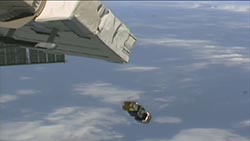
|
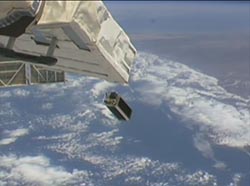
|
| ITF-2/WASEDA-SAT3/FREEDOM | EGG |
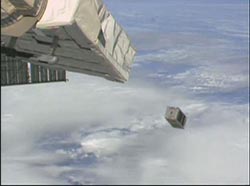
|
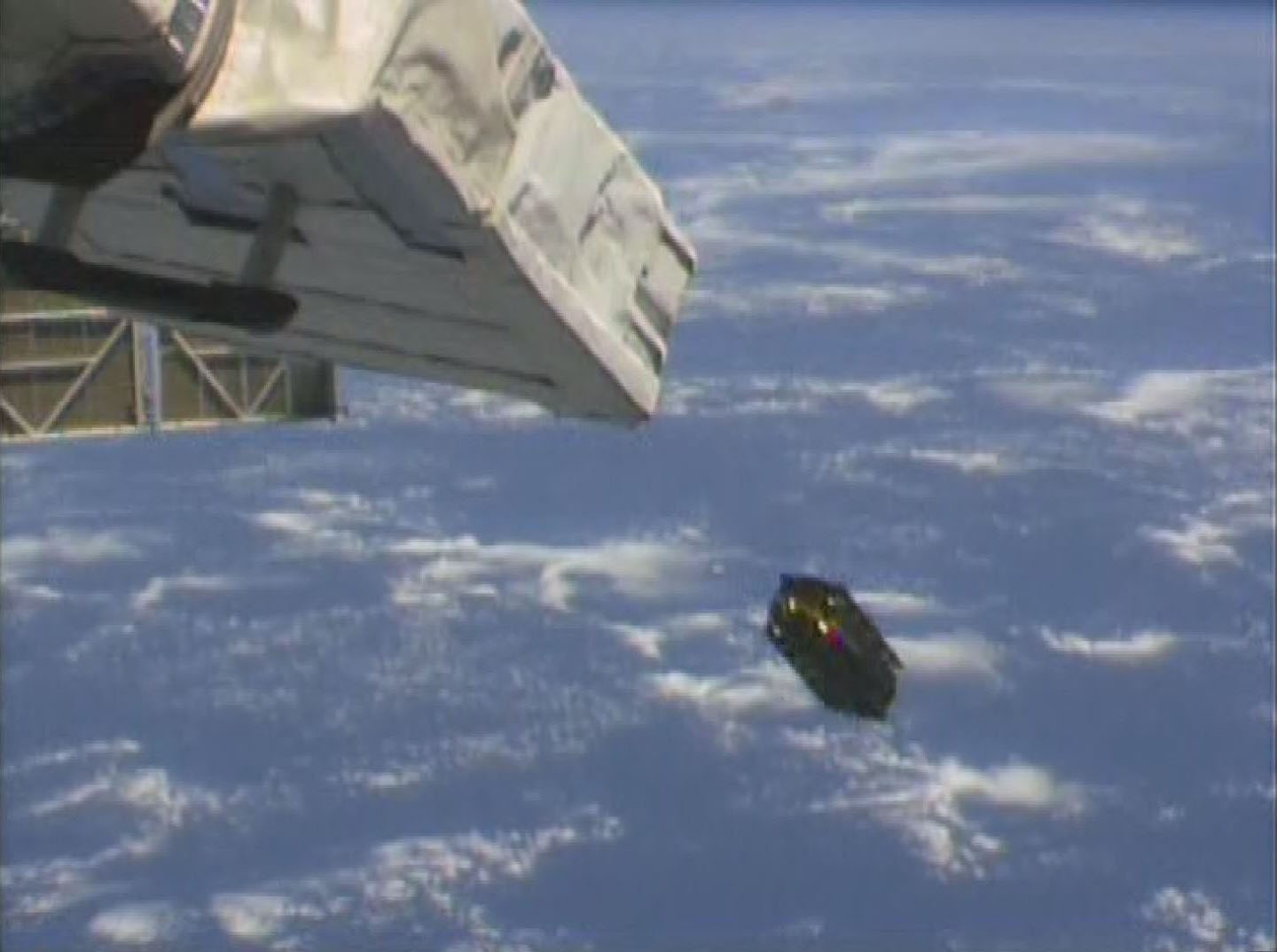 |
| AOBA-VeloxIII | TuPOD |
| Deployments of CubeSats (Credit:JAXA/NASA) | |
At the Tsukuba Space Center (TKSC), the personnel concerned monitored and applauded the successful deployments.

|

|
|
Personnel concerned monitoring the deployments (Credit:JAXA) |
|
The CubeSats deployed this time are the following:
These CubeSats were launched on December 9 aboard the H-II Transfer Vehicle KOUNOTORI6 and arrived at the ISS on December 14 alongside STARS-C CubeSat that has already been deployed.
For the series of deployments, an upgraded JEM Small Satellite Orbital Deployer (J-SSOD) featuring doubled deployment capacity at one time was used for the first time.
J-SSOD consists of four Satellite Install Cases. One case can contain up to three CubeSats (3U in total) and can deploy up to a total of 12U at one time.
CubeSat specification currently requires users to make satellites any one of the following sizes: 1U, 2U, or 3U. By flexibly combining different sizes of CubeSats, it can maximize the number of deployable CubeSats at one time.
*About CubeSats:
CubeSat is a microsatellite whose basic size is 10 cubic cm (called 1U), with 2U (20 cm in height) and 3U (30 cm in height) sizes also being available. JAXA’s J-SSOD was made in compliance with the CubeSat specification and can deploy a total of 12U at one deployment opportunity. In the near future, the deployment capacity of J-SSOD will be upgraded up to 48U.
*All times are Japan Standard Time (JST)
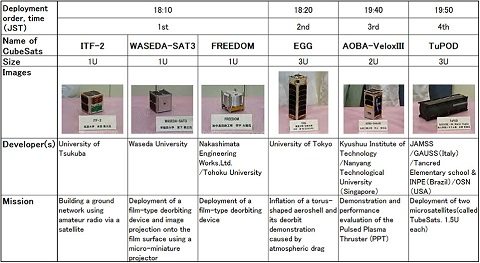
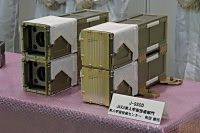
Comments are closed.